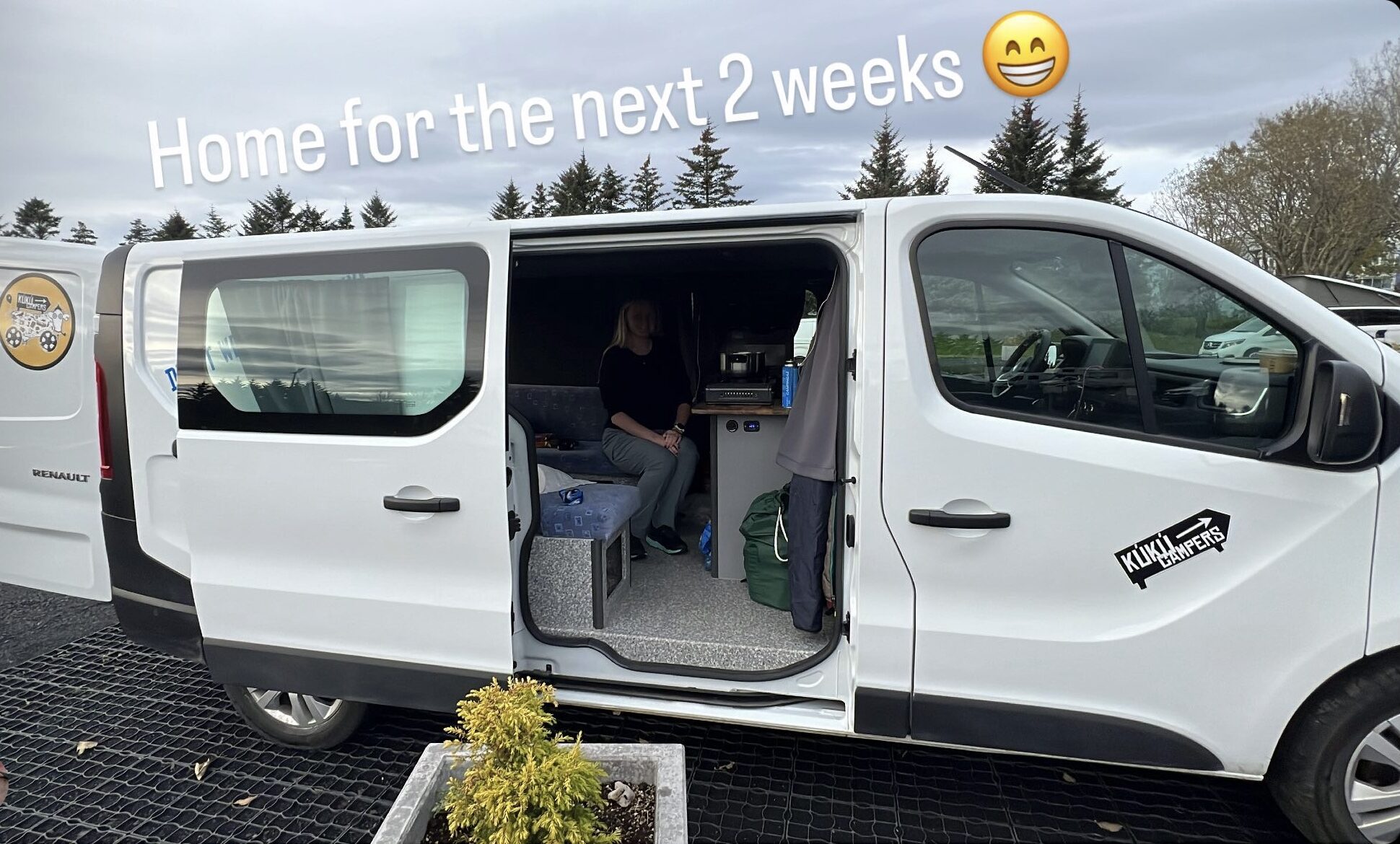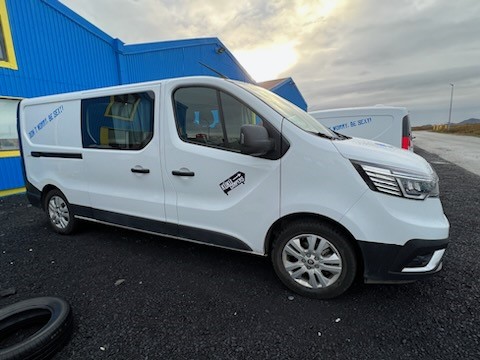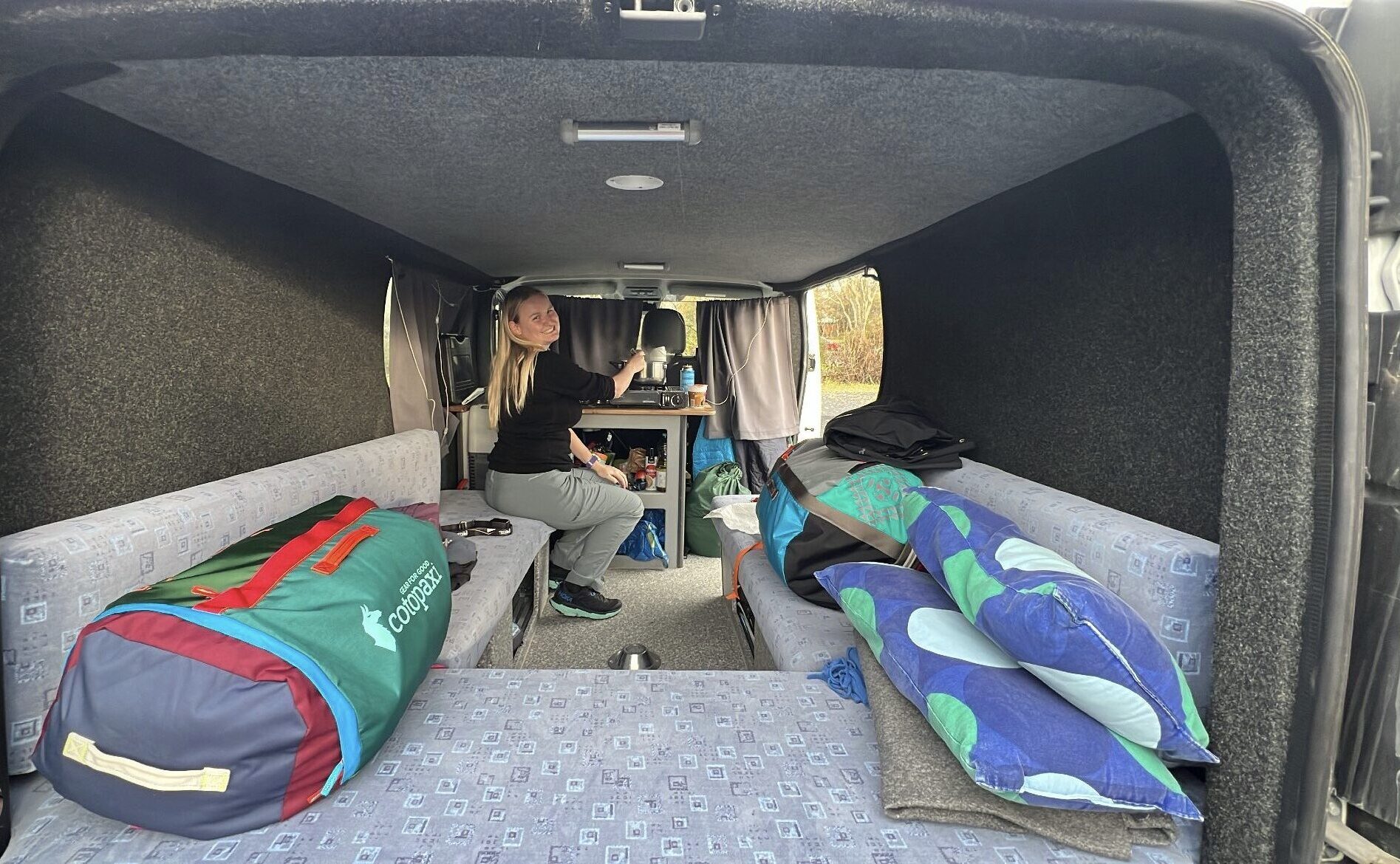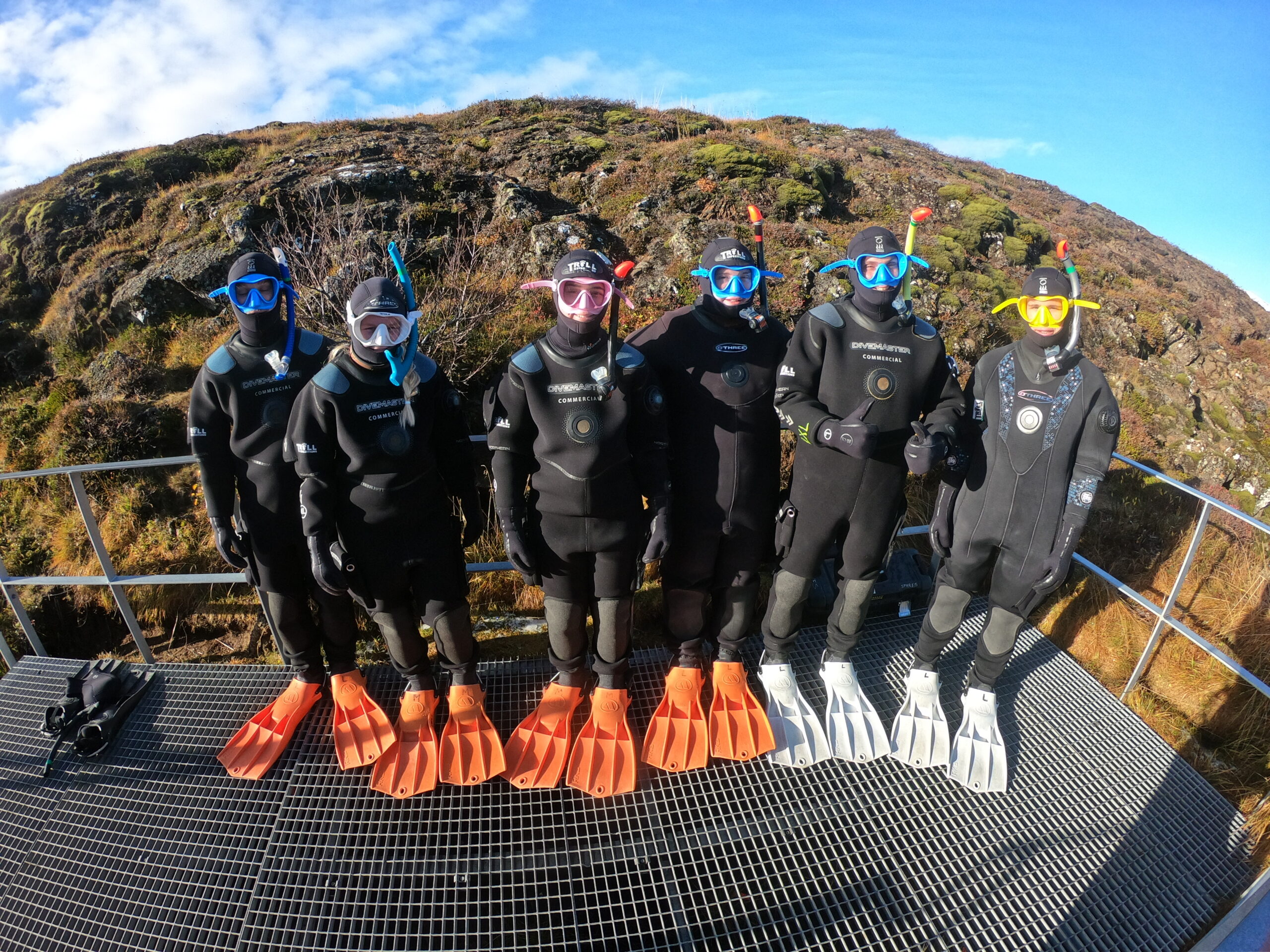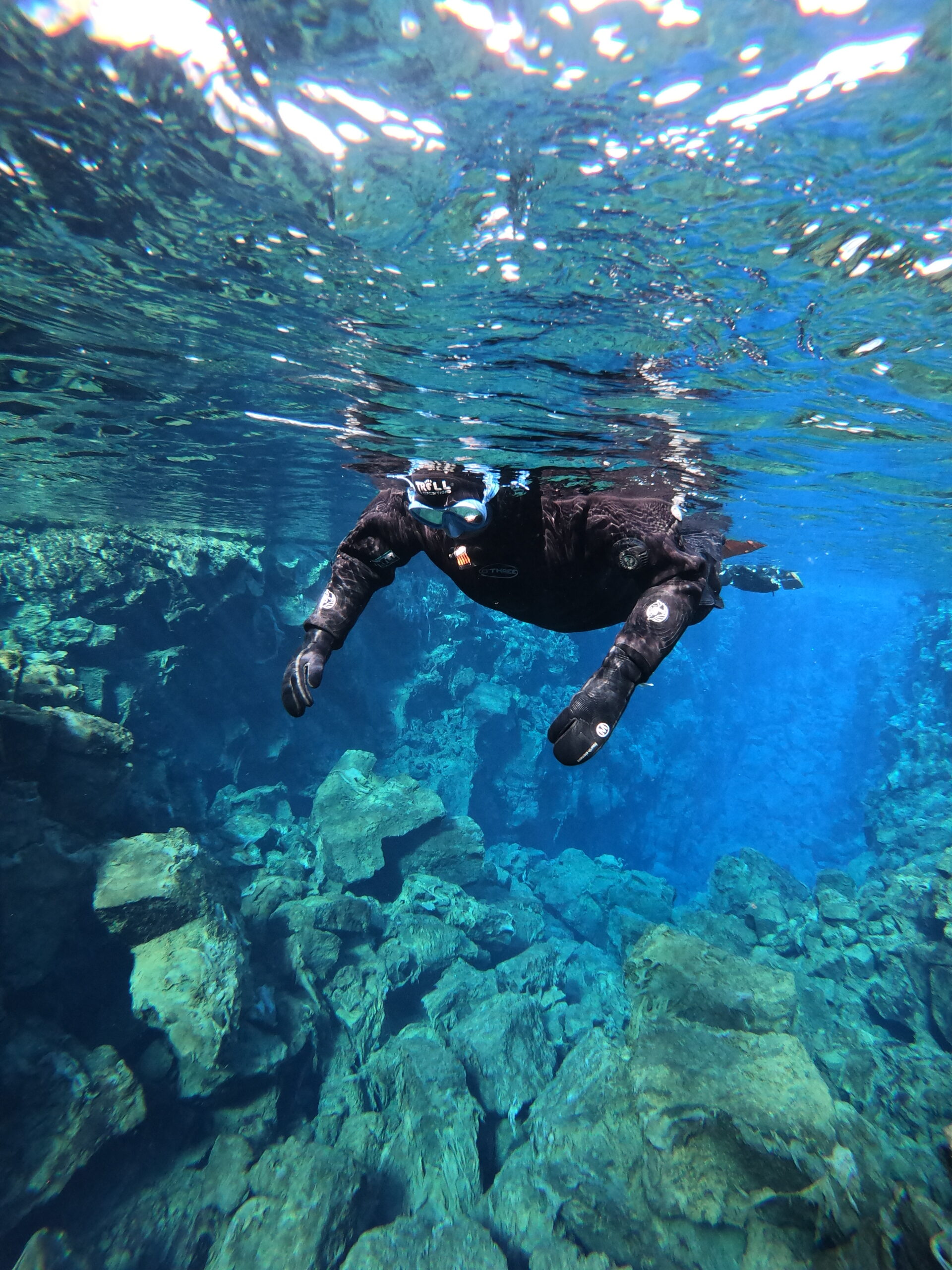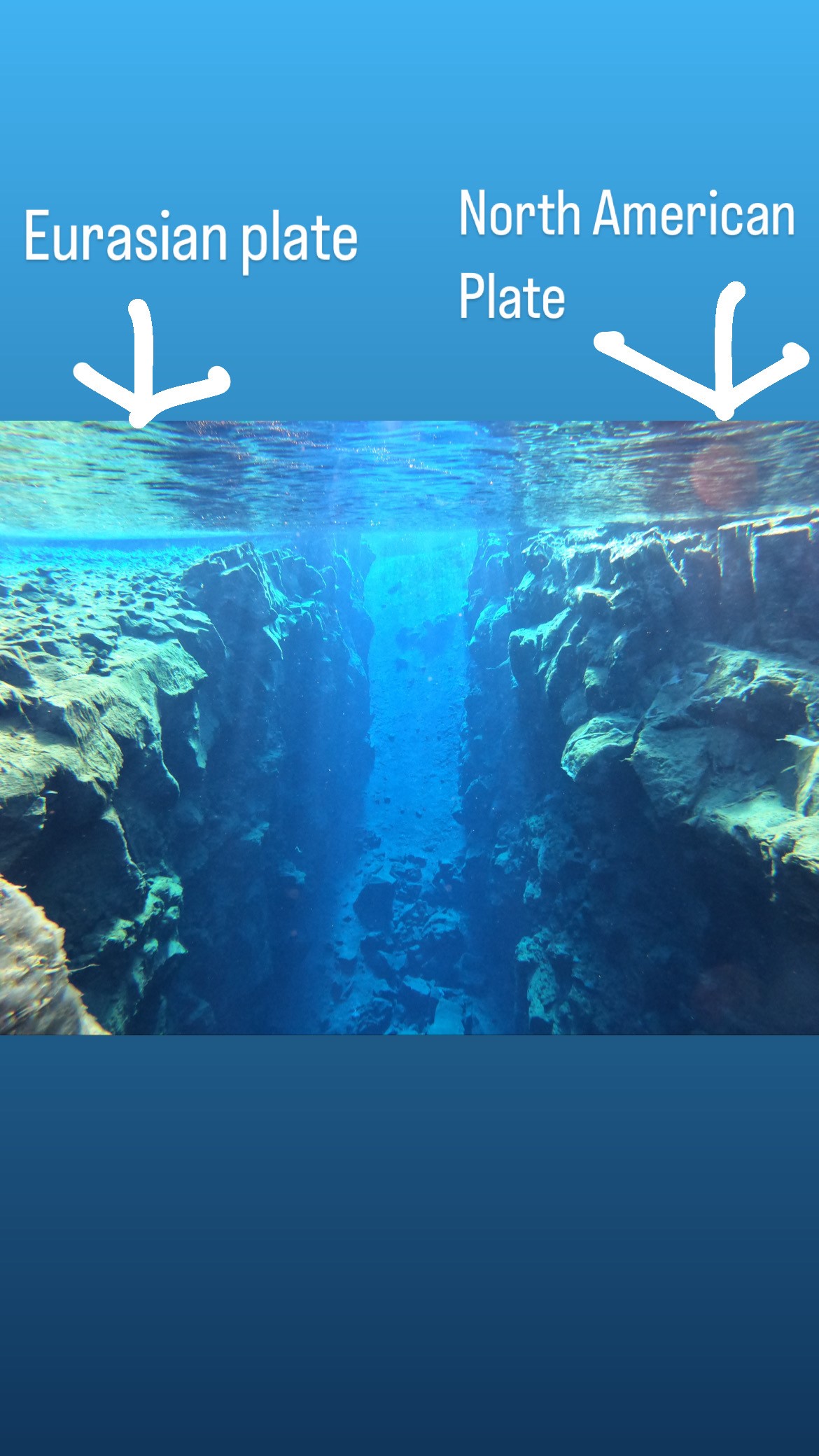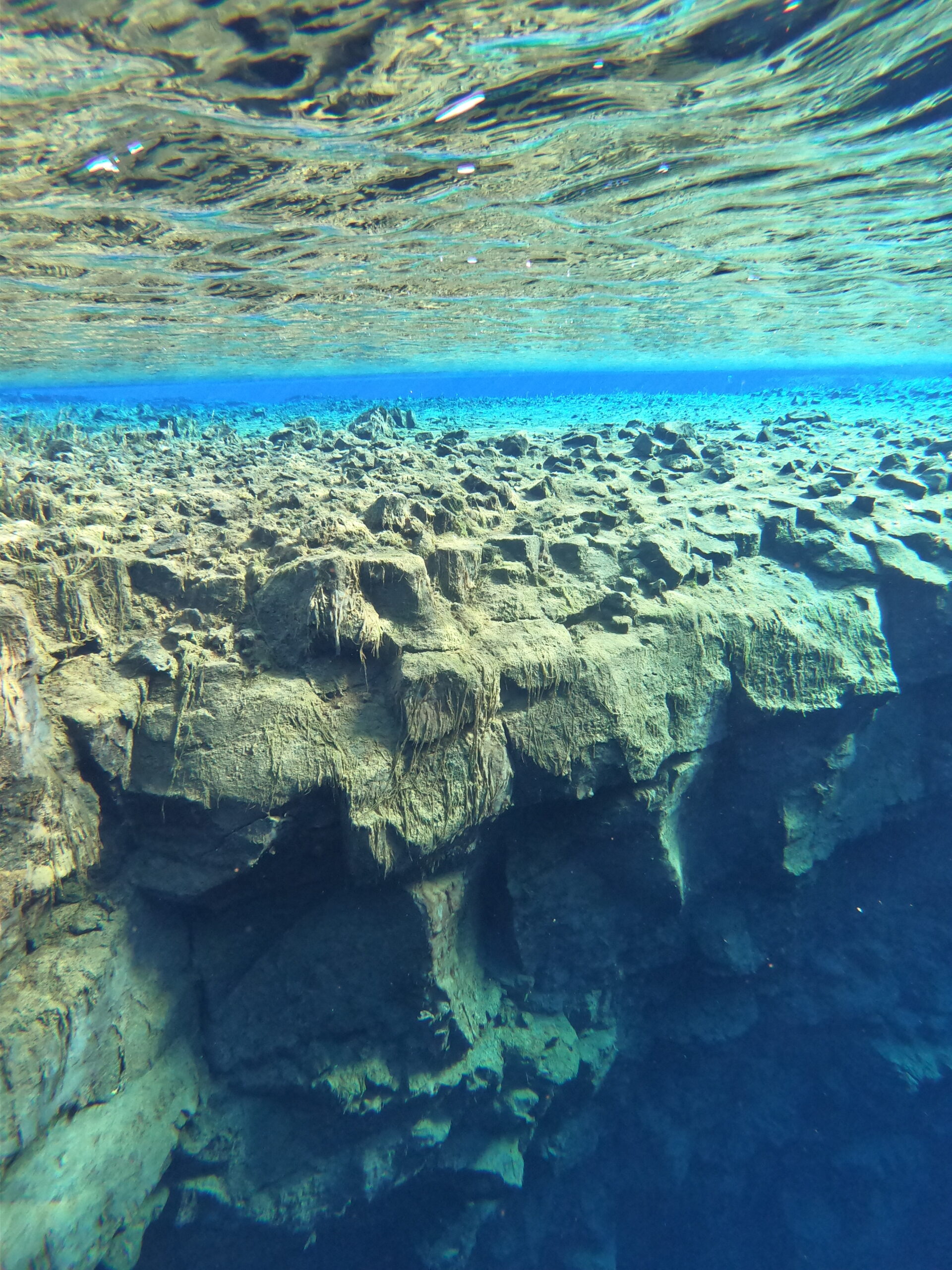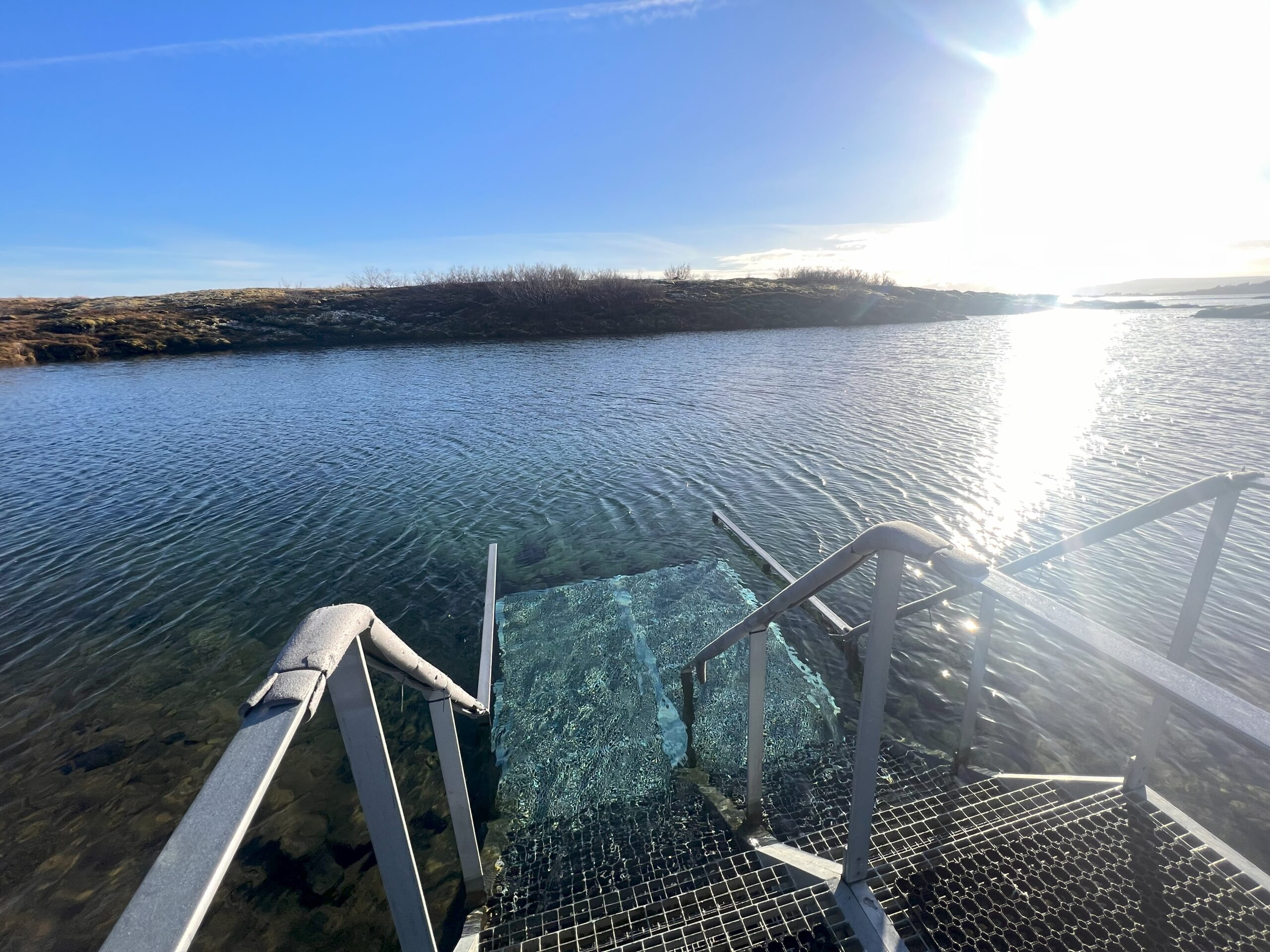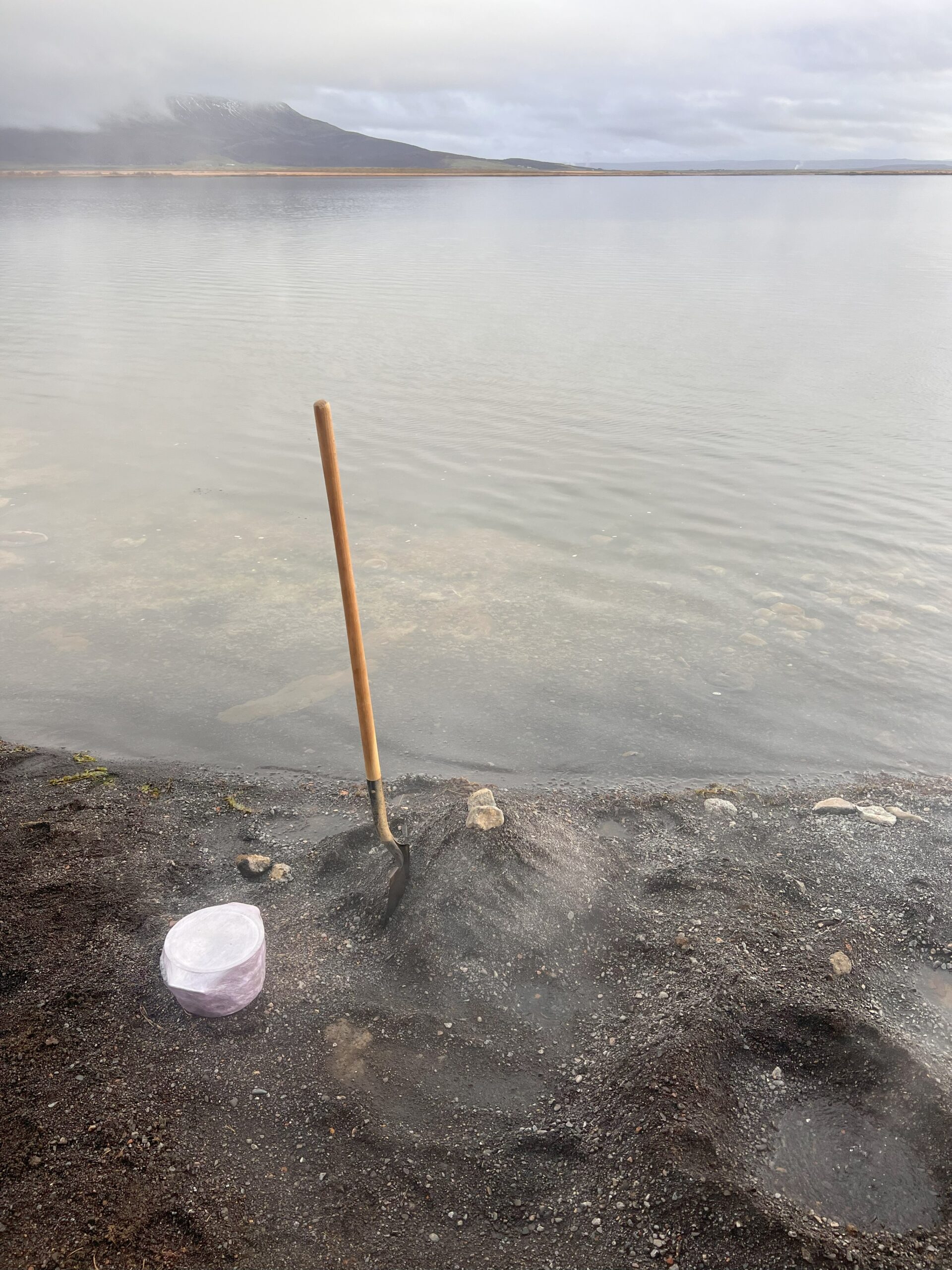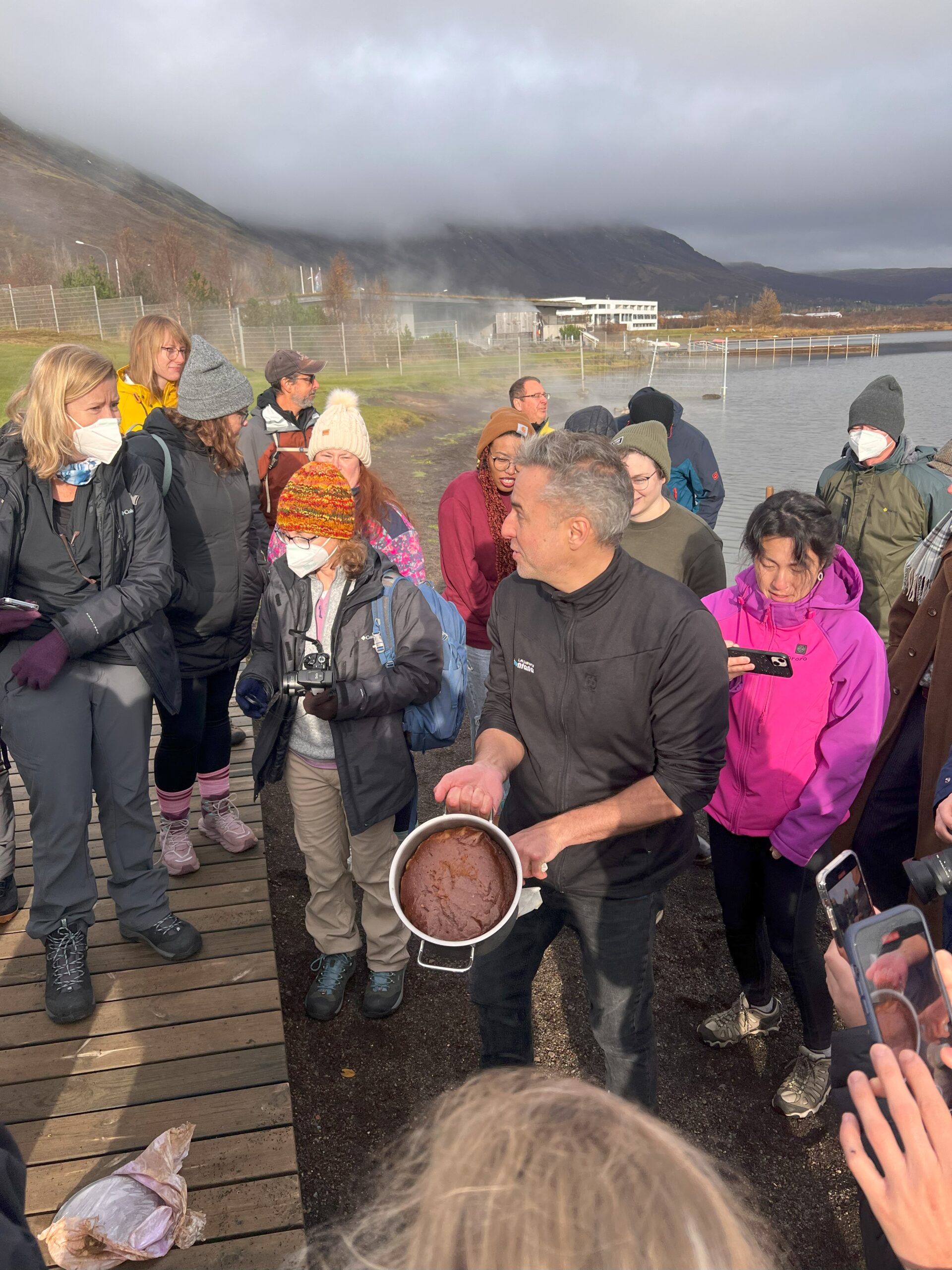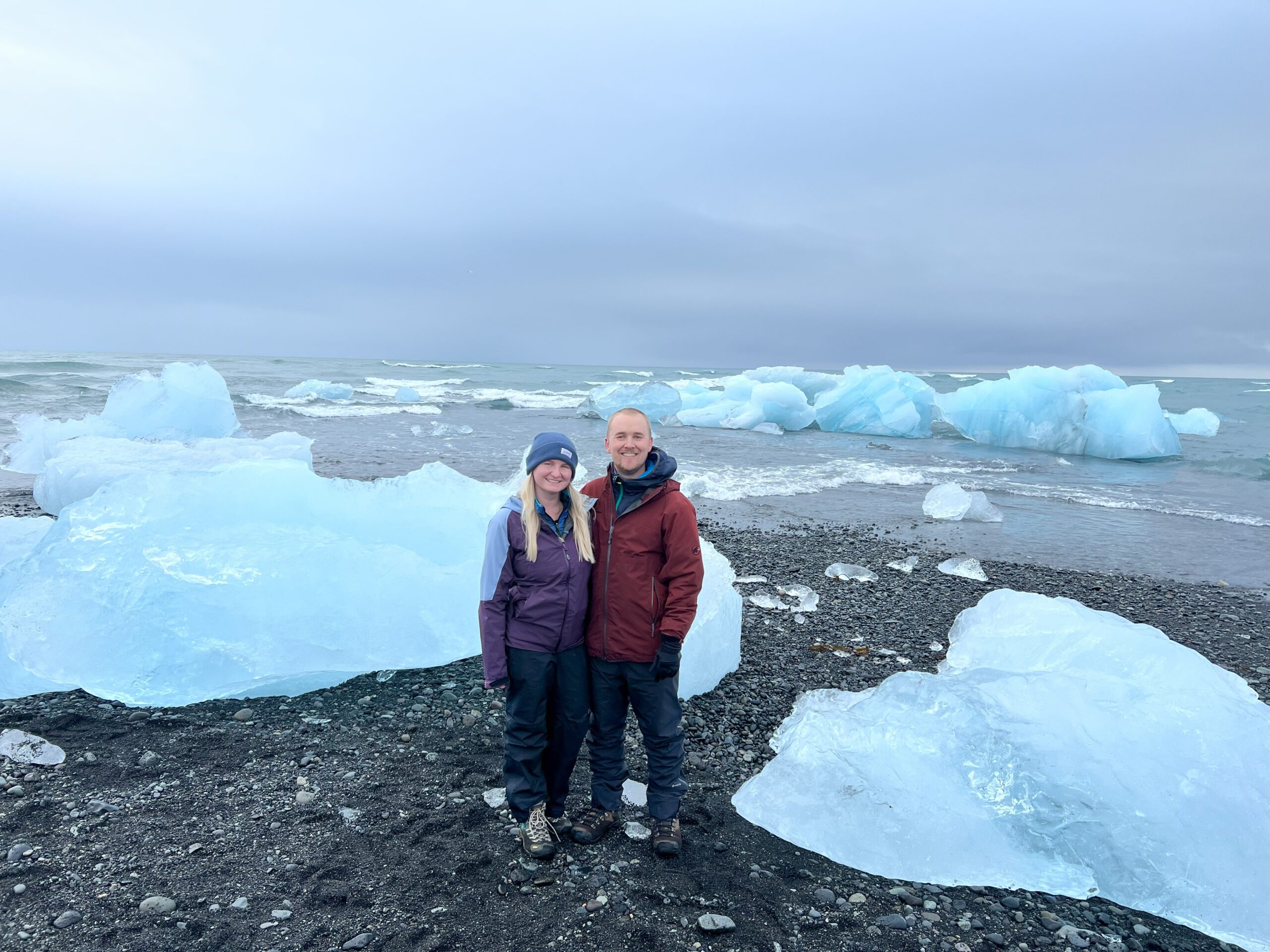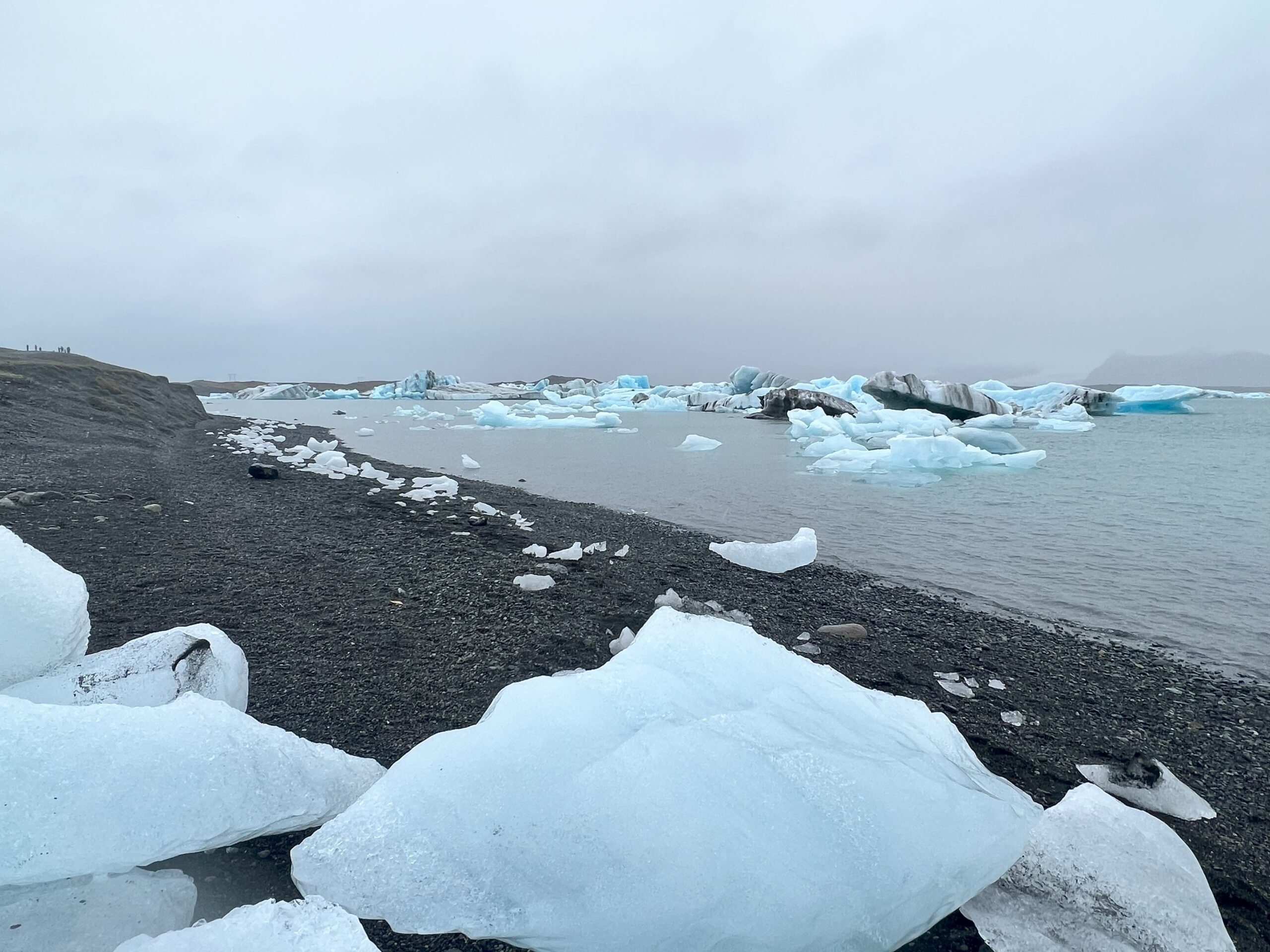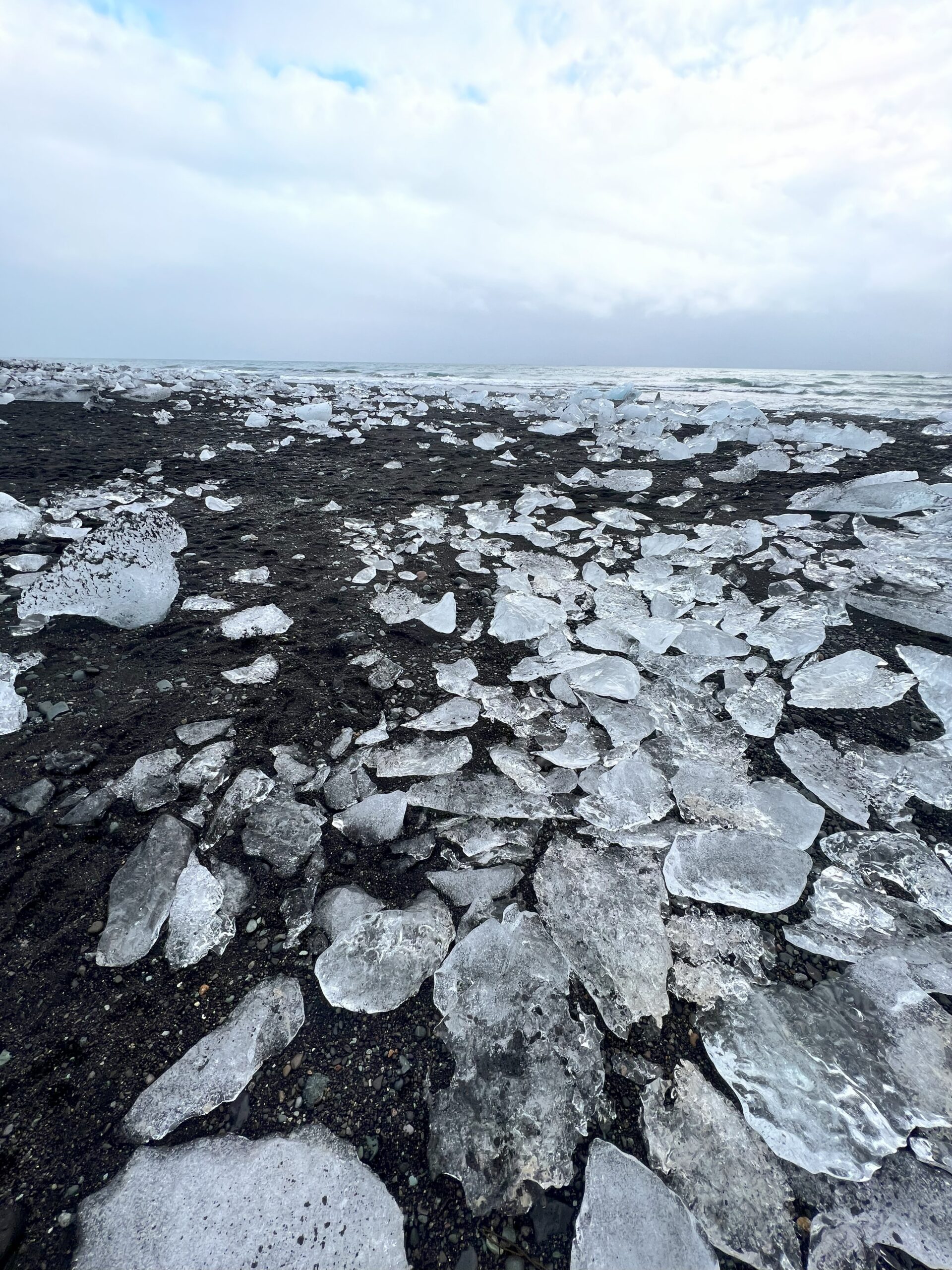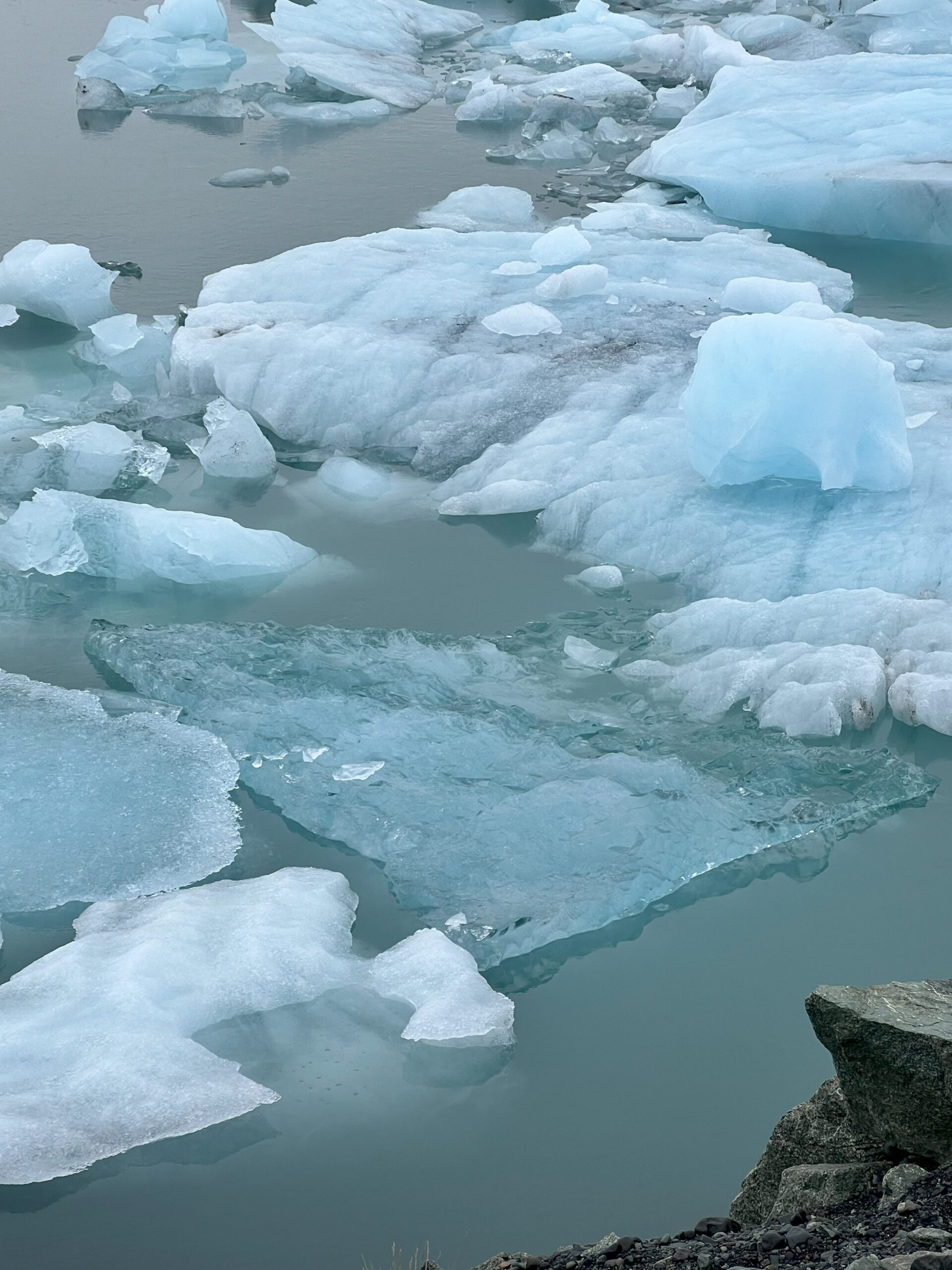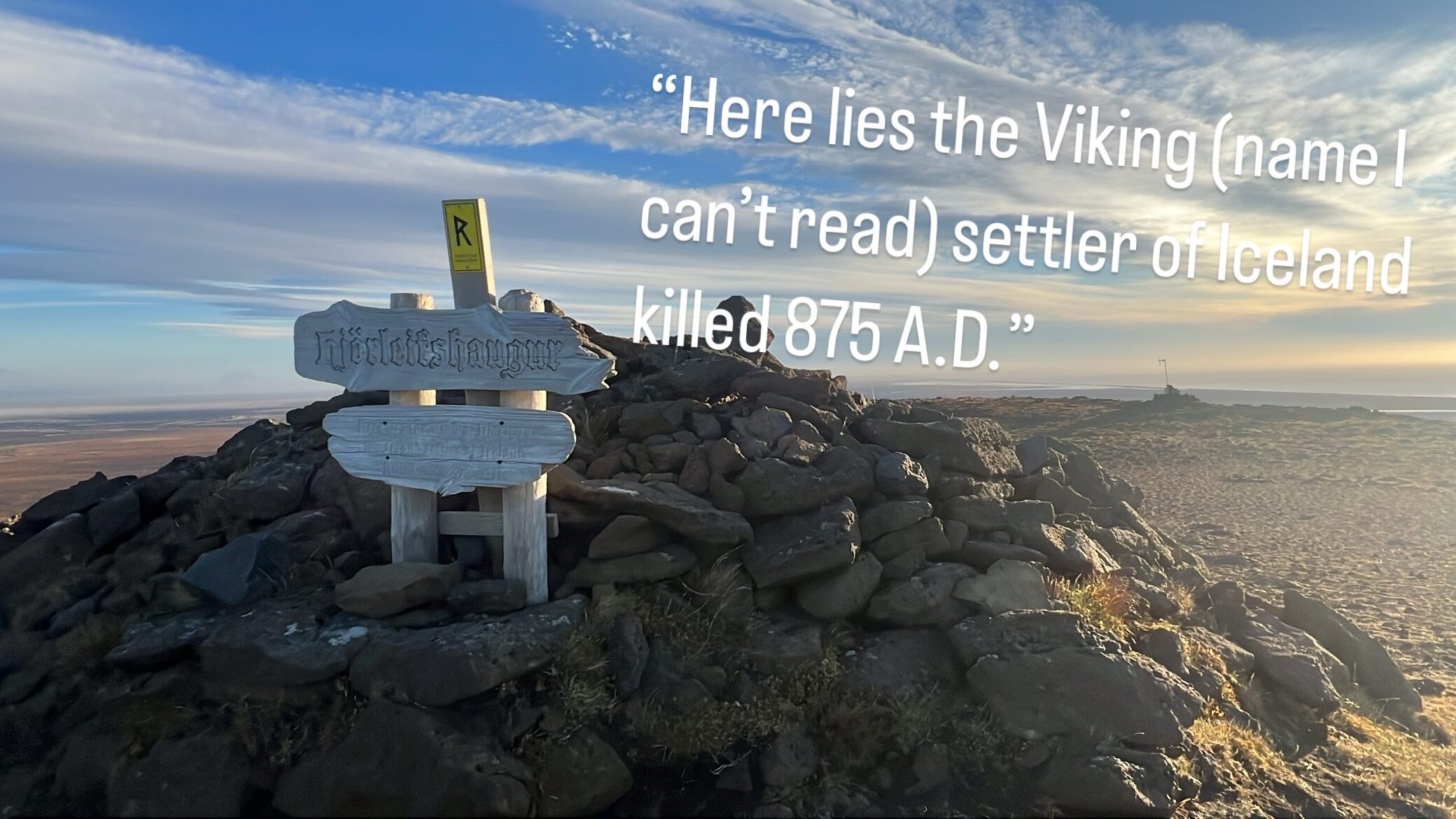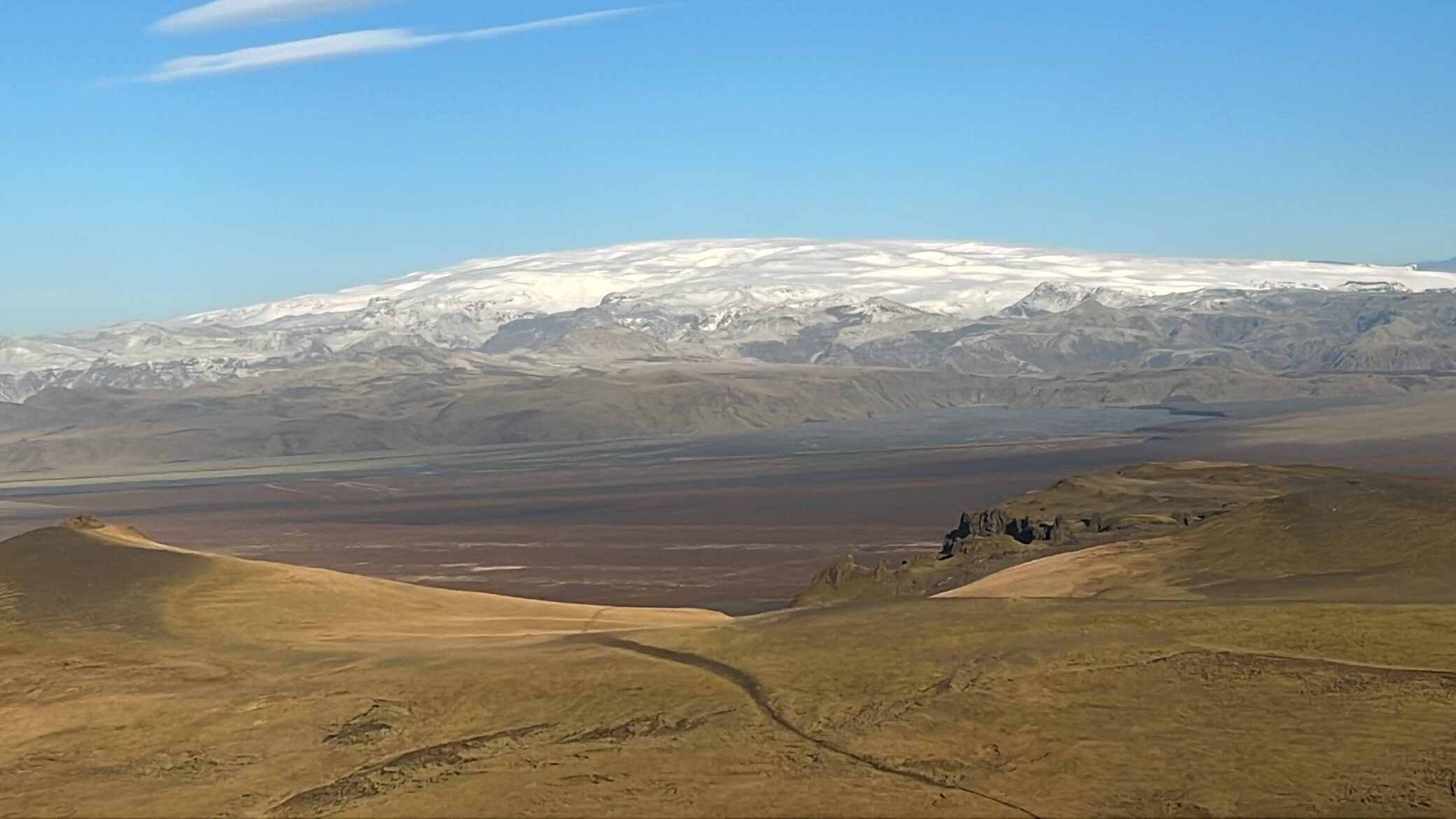Road Trip the Icelandic Ring Road via Camper Van
Iceland, otherwise known as the land of fire and ice, is very high on my list of favorite countries in the world. It was the first place my wife and I traveled internationally, and I strongly feel that any travel enthusiast will have an adventure here that will be remembered for the rest of their lives.
The country hosts an otherworldly landscape that will make you feel as removed from earth as any other country on this planet, from the never-ending twists and turns of the Westfjords to Europe’s largest glacier in the south to the volcanoes that live in just about every corner of this island, and black sand beaches even lined with ice. A trip here is all but guaranteed to spark your imagination.
You could plan a trip to Iceland in many ways, with most tourists staying closer to the capital of Reykjavik and day trips to the “Golden Circle.” However, if you want to see the magic of Iceland, I highly recommend hiring a camper van and going on a road trip circumnavigating the country on the 821-mile / 1322-kilometer ring road, otherwise known as Route 1.

Ring Road Itinerary
Reykjavik > Grundarfjörður – 2.5 hr drive and 178 km
Grundarfjörður > Patreksfjörður – 4.4 hr drive and 335 km
Patreksfjörður > Ísafjörður – 2.2 hr drive and 149 km
Ísafjörður > Akureyri – 6.75 hr drive and 557 km
Akureyri > Húsavík >Reykjahlíð – 1.75 hr drive and 130 km
Reykjahlíð > Egilsstaðir – 2 hrs and 165 km
Egilsstaðir > Höfn – 2.5 hrs and 185 km
Höfn > Vik – 3.25 hrs and 270 km
Vik > Reykjavík – 2.5 hrs and 187 km
Total time and distance: 27.9 hrs and 2156 km with Westfjords addition and 24 hours and 1322 km without Westfjords addition.
The blue text for days 2, 3, and 4 travel off the Ring Road and takes you through the Icelandic Westfjords. If you don’t have enough time, this could be an area to trim. Driving the Westfjords will add 4 hours of driving and 834 total kilometers. However, the Westfjords were my favorite part of the country, and I’d recommend making room to fit them in. Also, this itinerary is strictly to help organize the travel time between areas worth checking out. Still, it doesn’t account for extra time in cities like Reykjavik, Akureyri, Reykjahlíð, Höfn & Vik. You won’t be disappointed if you can add time to any of these places.
When to Go
There is an argument to visit Iceland during every season of the year. However, like with everything, there will be pros and cons. We visited in October during shoulder season and went in with accurate expectations. We got stuck in a wind storm for an extra day in Vik, we drove through a whiteout blizzard in Reykjahlíð, and we got wet often, but we also had some sunny days and saw the northern lights in Reykjavik. Below, I will outline some of the pros and cons of visiting during different times of the year.
Summer:
Pros: Best weather of the year, and the daylight lasts between 20-22 hours/day.
Cons: Higher prices, no northern lights, bigger crowds, reservations.
Fall:
Pros: Higher chances of northern lights, weather is manageable, no reservations, crowds are smaller.
Cons: It can be wet and windy, daylight is closer to 8-12 hours/day, getting colder.
Winter:
Pros: It is gorgeous to see the landscape covered in snow & Ice, very high chances of seeing the northern lights, and the lowest prices of the year, no crowds.
Cons: 4-5 hours of daylight, very cold, weather makes everything more complicated, need better vehicles.
Spring:
Pros: 10-16 hours of daylight, the weather is improving, still good chances to see the northern lights.
Cons: It can still be wet and windy, there is still a high chance of snow storms, and the wildlife is still hibernating.
Where to Stay
There is a lot to cover when developing a plan for your adventure. The most crucial aspect, however, is how you will get around. Iceland is quite an expensive country to travel to, and the price of renting vehicles is no exception. With that said, renting a camper van is one of the best ways to have a proper adventure in Iceland. Once you rent the van and pay for campgrounds, you will be paying the same prices you would pay for a rental car and hotels. Not only that, but the campgrounds in Iceland are very accommodating, with most of them having communal kitchens, showers, laundry facilities, and Wi-Fi.
After some research, we elected to hire a van with Kuku Campers in Keflavik (close to the airport) and had a great experience. They were roughly the same price as the other companies in the area, but we were pleased with the amenities and customer service. We elected to go with the “BA Camper Van” option, which had an automatic transmission, could seat and sleep 3, a kitchenette and sink, a space heater for the colder nights, and an electric cooler. We found it to be incredibly spacious for the two of us.
In total, we paid $3025.20 USD for the rental and $280 USD for the accident insurance for 15 nights, which worked out to $220 USD / day.
If you’re interested in renting a van with KuKu, here is a link to their website:
KuKu Campers
Once you have your camper van, you can plan to stay at the designated campgrounds. It is illegal to “car camp” anywhere in Iceland that isn’t inside a designated campground. Luckily, the campgrounds are accommodating and pleasant to stay at. Most of our positive interactions with others were at these campgrounds, and we even ran into people hundreds of kilometers down the road whom we had met before. They almost all have running water, electricity, shared kitchens, and showers, and some have laundry.
It’s easy to find the campgrounds; however, in the busy season, it may be necessary to make reservations. We went in October and had no issues showing up on a first-come, first-serve basis, but this would be different in the summer months. There was one situation in Patreksfjörður where the campground was already closed for the winter. However, we got permission from the manager to camp there for the night.
What to Add to Your Trip
Paid Experiences:
Thingvellir National Park Snorkel
Whenever we reminisce about our time in Iceland, this is often the experience we bring up the most.
Thingvellir National Park is situated between the North American and Eurasian Tectonic plates, and there is an underwater canyon in the N.P. where you can snorkel and touch the two tectonic plates simultaneously.
We chose to book this experience through Troll Expeditions and had a great experience. They provided all the gear, fitting you properly for the gear, and explained in detail how to use it. If we were to do it again, we would use this company without hesitation.
Here is a link to help you book:
Tectonic Place Snorkel
Laugaurvatn Bread Making
This breadmaking experience is something unique that anyone could add to their itinerary while in the “Golden Circle.” What makes it unique?
They bake the break in the boiling sands of a geothermal lake. Thats right. They prepare the dough, wrap the pot in plastic wrap and bake the bread in the beach overnight. As shown in the picture on the right, you can see the pot wrapped in plastic and the pit it was dug out of with boiling water inside.
After they dig out the bread, they take it to a serving room, and the tour group tastes it. The experience was so much fun, and I recommend that anyone traveling to Iceland try it. There are also hot pools you can take advantage of before or after the tour.
As of 2024, this experience will run you 3190 ISK or $22.83 USD.</
Here is a link to book:
Laugaurvatn Break Making
Hot Pools:
The Blue Lagoon
The first thing we did after picking up our camper van was stop at the Blue Lagoon. These famous picture-perfect hot pools were a great place for relaxation, mud masks, a beer, and the obligatory Instagram post. It is worth saying that while worth the cost of admission, these are the most expensive hot pools in Iceland, and if you’re on a budget and want to avoid falling for the tourist trap, there are definitely alternatives.
Advanced reservations are required at the Blue Lagoon, and time slots disappear quickly. Depending on the package you select, the cost of admission ranges from $76 – $159 USD.
It is important to note that the Blue Lagoon has been impacted by volcanic eruptions in 2024 and may not be open.
Here is a link to help you book:
Blue Lagoon
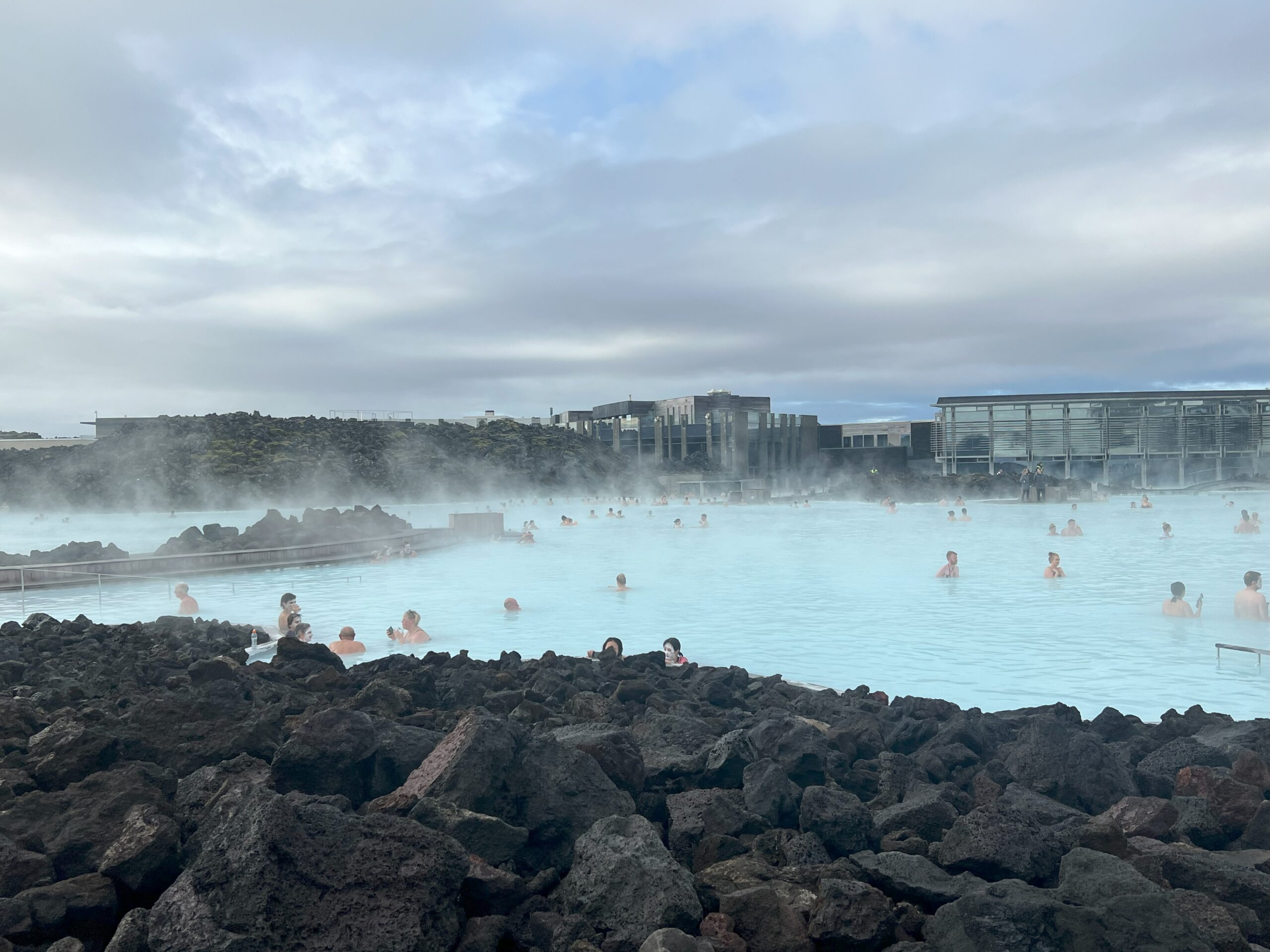
Secret Lagoon
Iceland’s oldest thermal pools are conveniently near the “Golden Circle” attractions.” There is only one sizeable hot pool for people to enjoy. However, this one did include a bar and eating area. The prices were friendly here, running around $25 USD / person.
Here is a Google Maps link to help you locate these pools:
Secret Lagoon – Google Maps
Mývatn Nature Baths
These are arguably the second most popular thermal pools in the country. However, they are located quite far in the north in the small town of Reykjahlíð. Although smaller than the Blue Lagoons pools, these nature baths are situated in North Iceland’s absolutely beautiful landscape. I enjoyed the sauna at these pools almost more than the pools themselves, as we visited on an extremely cold and windy day. Tickets to these pools are roughly $50 USD / person
Here is a Google Maps Link to help find these pools:
Myvatn Nature Baths
Jarðgangalaug
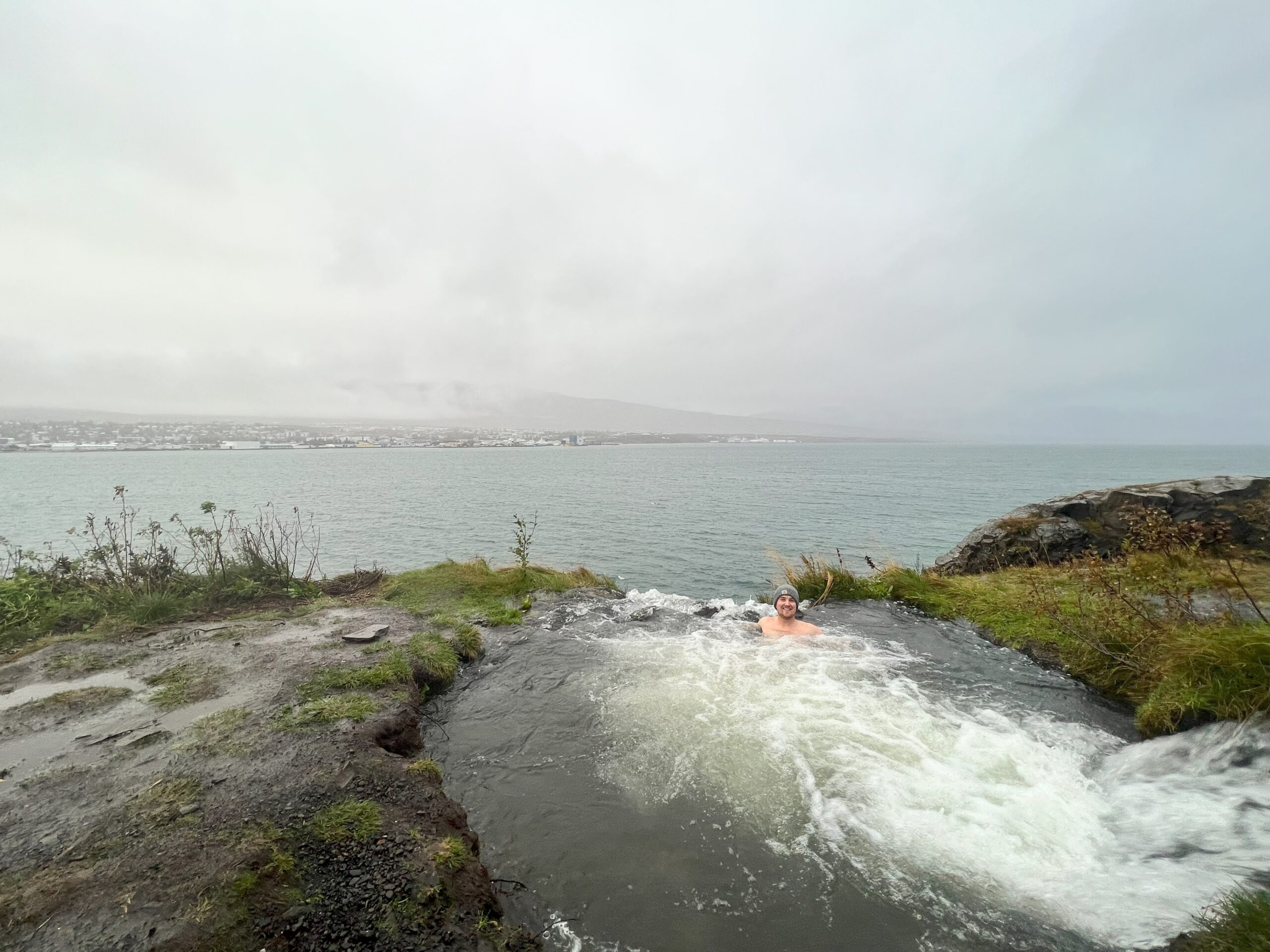
This is one of those places that we only found by talking to fellow tourists (on the other side of the country). They explained it as a thermal waterfall right outside of Akureyri. It’s literally just a waterfall off of the main road and yes it is thermal. There is a upper and lower section of this waterfall and the best part is that it is only 60 miles from the artic circle!
This one can be tricky to find so here is a Google Maps link to assist:
Jarðgangalaug (Hot Thermal Pot)
Gudrunarlaug
This off-the-beaten-path hot pool would only be convenient if you added the Westfjords to your road trip. There was no sign to help find these pools, and you had to walk up a hill, maybe 1/4 mile, to access it. There was a small changing room, and it was an amazing place to warm up and spend a couple of hours.
This hot pool is also difficult to locate:
Gudrunarlaug – Google Maps
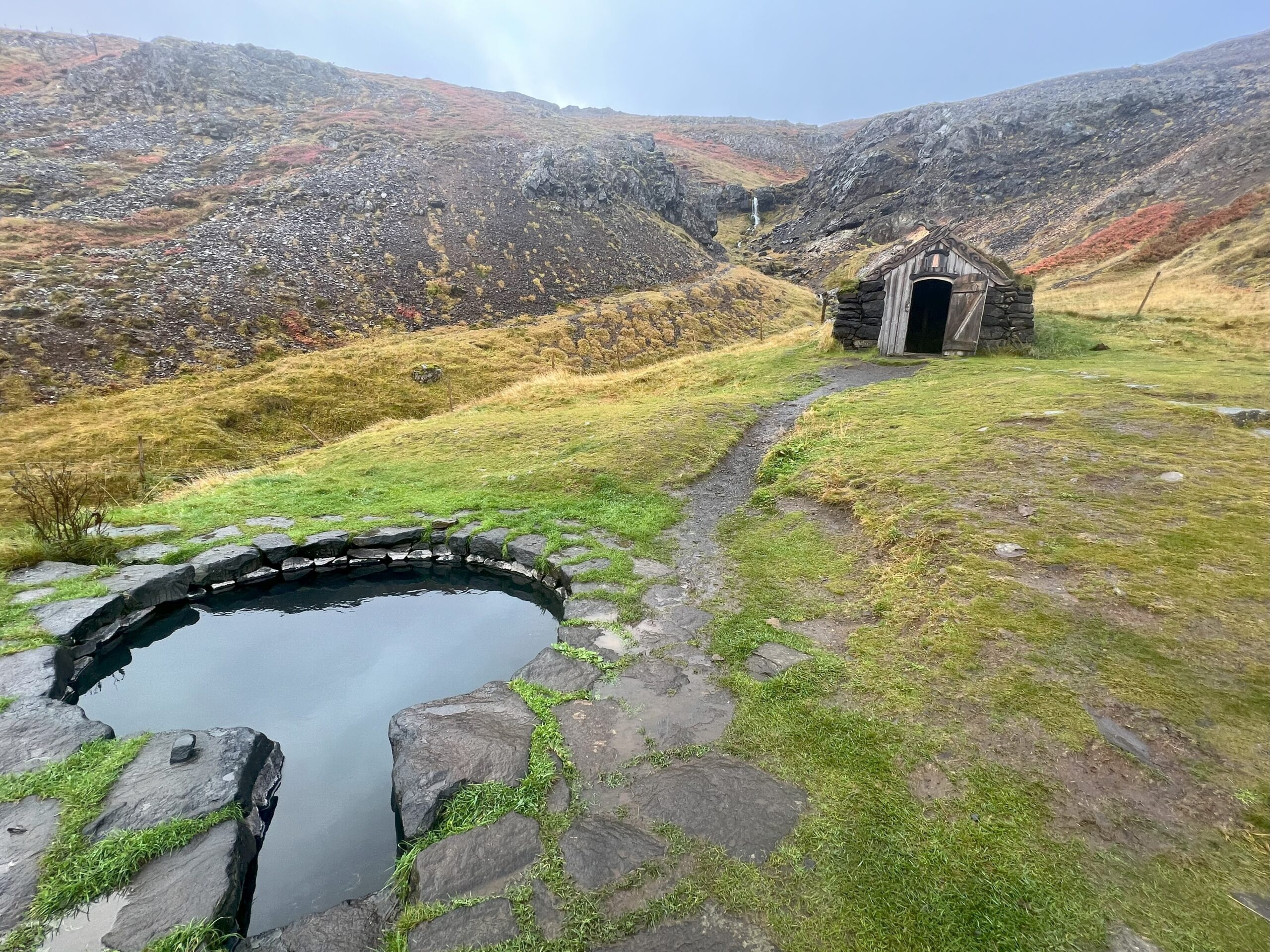
Roadside Attractions:
Skógafoss
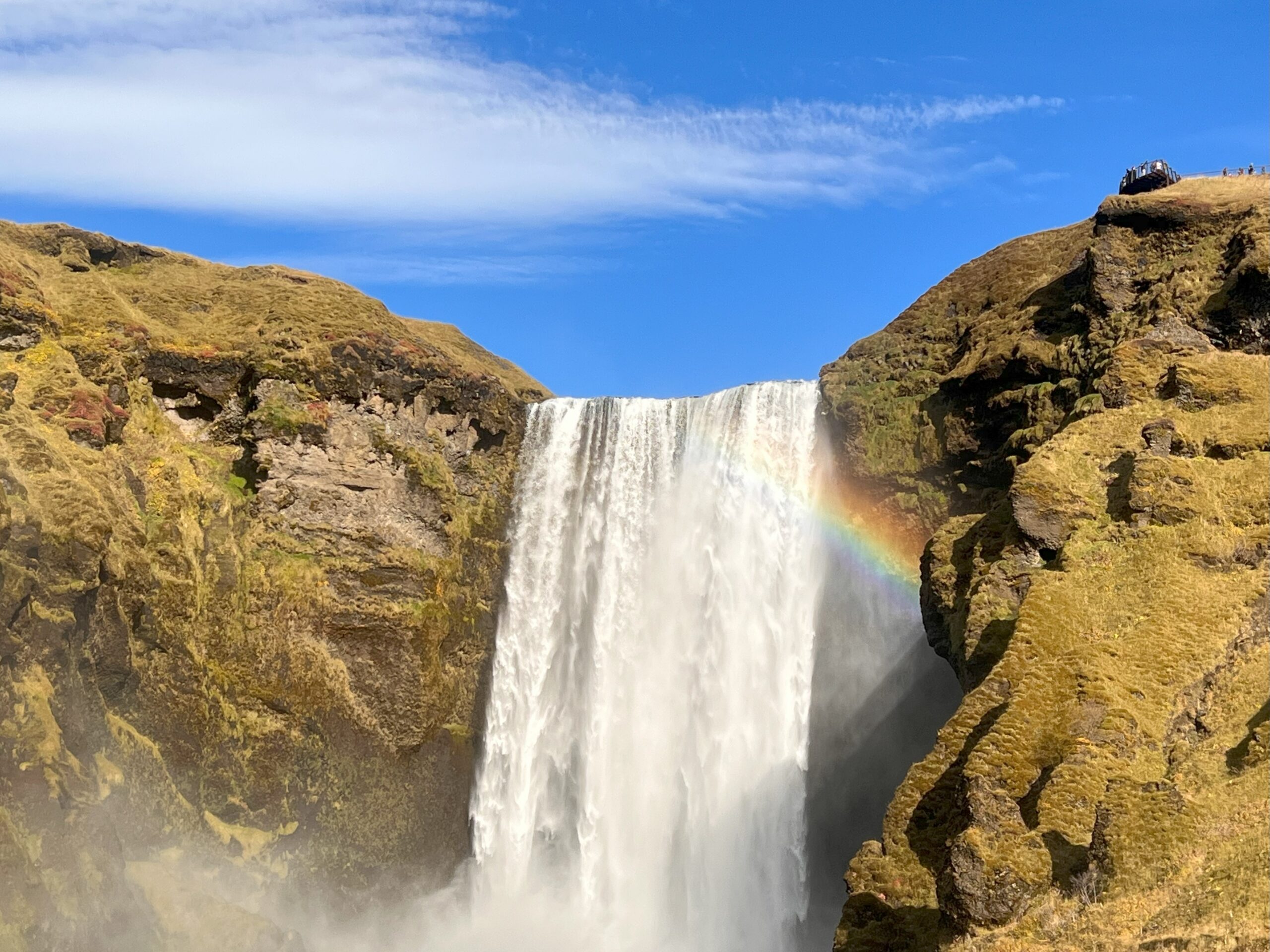
Skogafoss is arguably the most famous waterfall in the country. One trip here, and it’s easy to understand why that is. The waterfall is absolutely stunning, and we were lucky to see it in perfect weather conditions. </p>Unchanged: <p>It’s right off the ring road, and with the site marked extremely well with signs, it’s hard to miss. A walking path to the right of the falls takes you to the top and has a smooth trail that continues along the water for many kilometers.
Here is a link to help find the waterfall:
Skógafoss
Dettifoss
This waterfall was the highest on my list because I’m a fantasy nerd, and it was the waterfall used in the filming of Prometheus.
It’s relatively close to the Ring Road, but it takes you off the highway by at least 15 minutes each way. Unless you drive it in a blizzard like we did, it may take you closer to 30-40 minutes each way.
There’s a pleasant 15-minute walk to get from the parking lot to the waterfall viewpoints, and it is recommended to check out all of the viewpoints as they all show a different vantage point of the waterfall
Google Maps Link:
Dettifoss
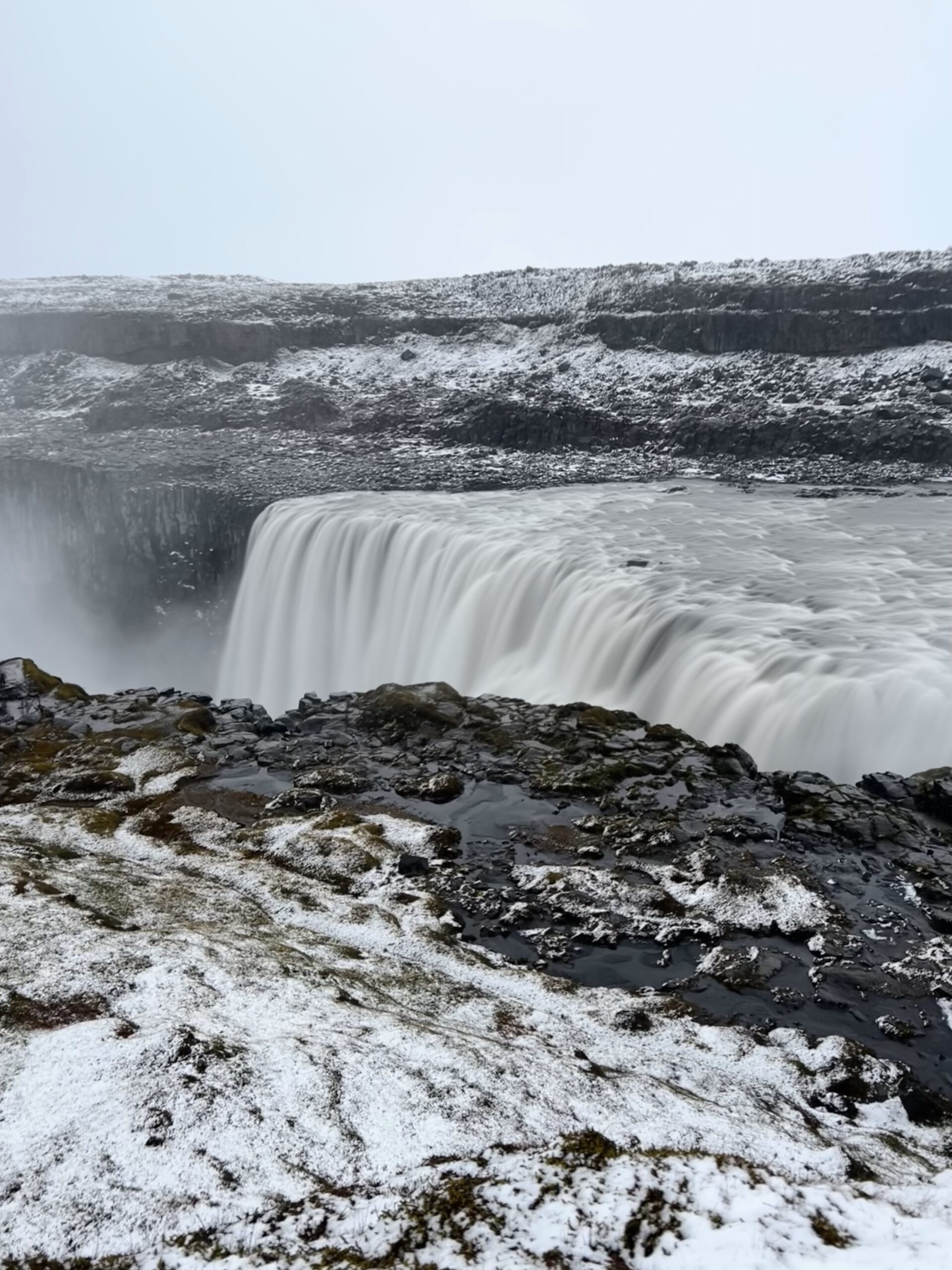
Diamond Beach
Diamond Beach was at the top of our list of places we had to see in Iceland, and for good reason. Ice breaks off the nearby Jökulsárlón Glacier and floats through a canal that connects the glacier lagoon and the ocean. The currents then carry that same ice to the black sand beaches that line the coast. It makes for an otherworldly landscape that is otherwise very rare to duplicate.
The beach is conveniently located right off the Ring Road and would take little effort to add to your itinerary. We planned on stopping here for an hour but found ourselves exploring for the better part of 3 hours. It was one of those places we found very difficult to walk away from.
Google Maps Link:
Diamond Beach
Dynjandi Waterfall
This massive waterfall would only be possible to include in your itinerary if you added the Westfjords addition to your road trip. It’s an enormous waterfall that cascades to 5 or 6 smaller waterfalls underneath it. Meanwhile, the backdrop is a gorgeous Iceland fjord void of people or infrastructure. Hiking at this waterfall really makes you feel like you are at the ends of the earth because of how remote it is. In fact, the drive to access this waterfall is equally as beautiful as the falls themselves.
If I still need to convince you to add the Westfjords to your trip, I strongly urge you to reconsider. I would travel back to Iceland specifically to make this road trip again.
Google Maps Link:
Dynjandi Waterfall
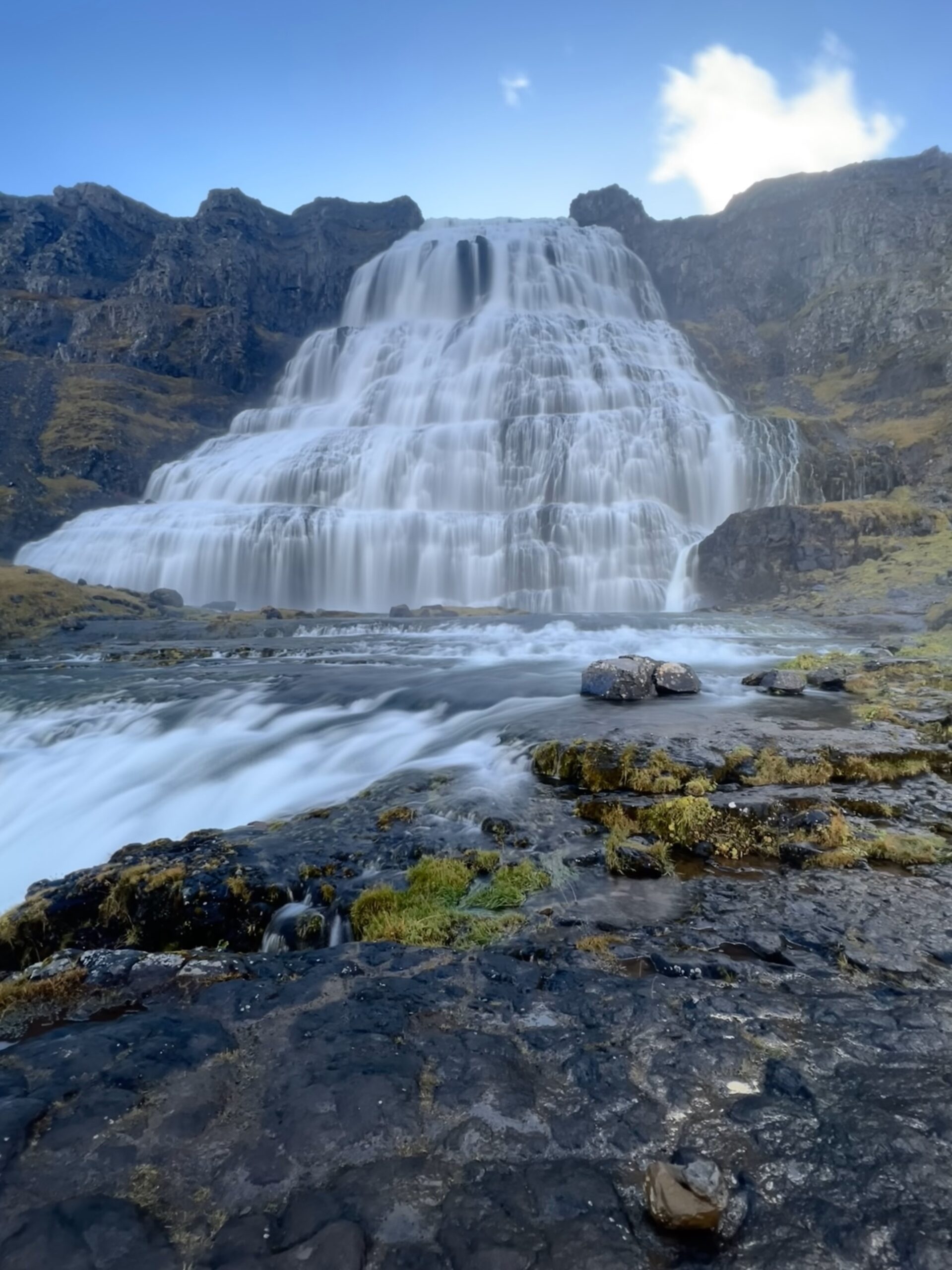
Gardar BA 64
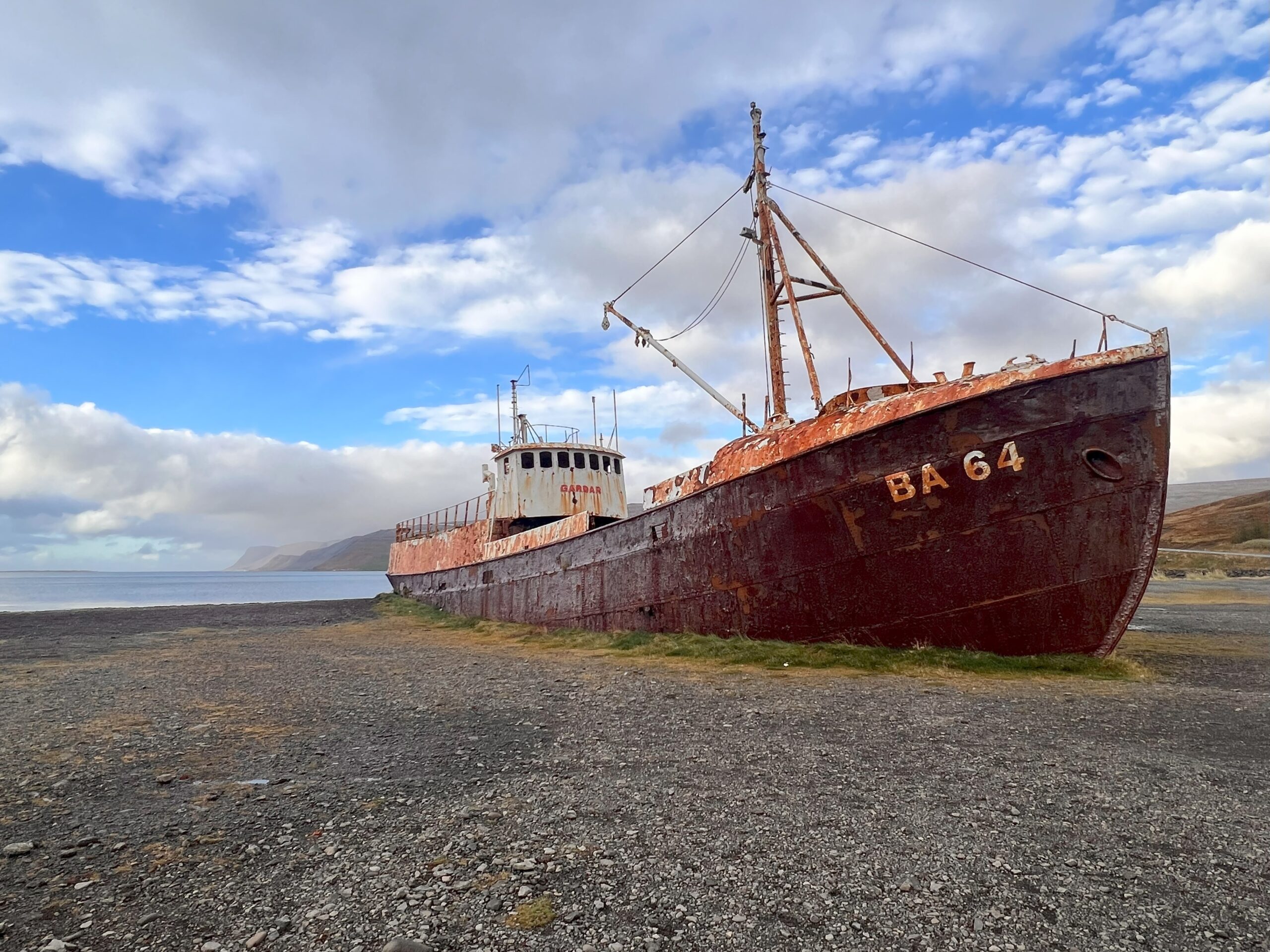
The Gardar BA 64 is Iceland’s oldest steel ship. It’s the remains of a Danish ship that sunk in 1981. It’s located in the Westfjords and would only be worth stopping to check it out if you were adding the Westfjords addition to your road trip. However, if you do make it out this way, it will make for a fun 30 min to explore the ship. Just make sure you are up to date on your tetanus shot.
Google Maps Link:
Gardar BA 64
Walter Mitty Road
You might remember the scene from “The Secret Life of Walter Mitty” (my favorite movie) where Walter braves longboarding down a windy road just in time to catch a volcanic eruption? Well, you can go to the exact location where this was filmed.
We discovered that we were close to the filming location at the last minute and decided to add it to our day. The best part was the little town at the bottom of the hill. We found a classic rainbow sidewalk/church combination and the best avocado toast we’ve ever had in this town. Classic Iceland.
Google Maps link to help find the location:
Walter Mitty Filming Location

Hiking Adventures:
Stuðlagil Canyon
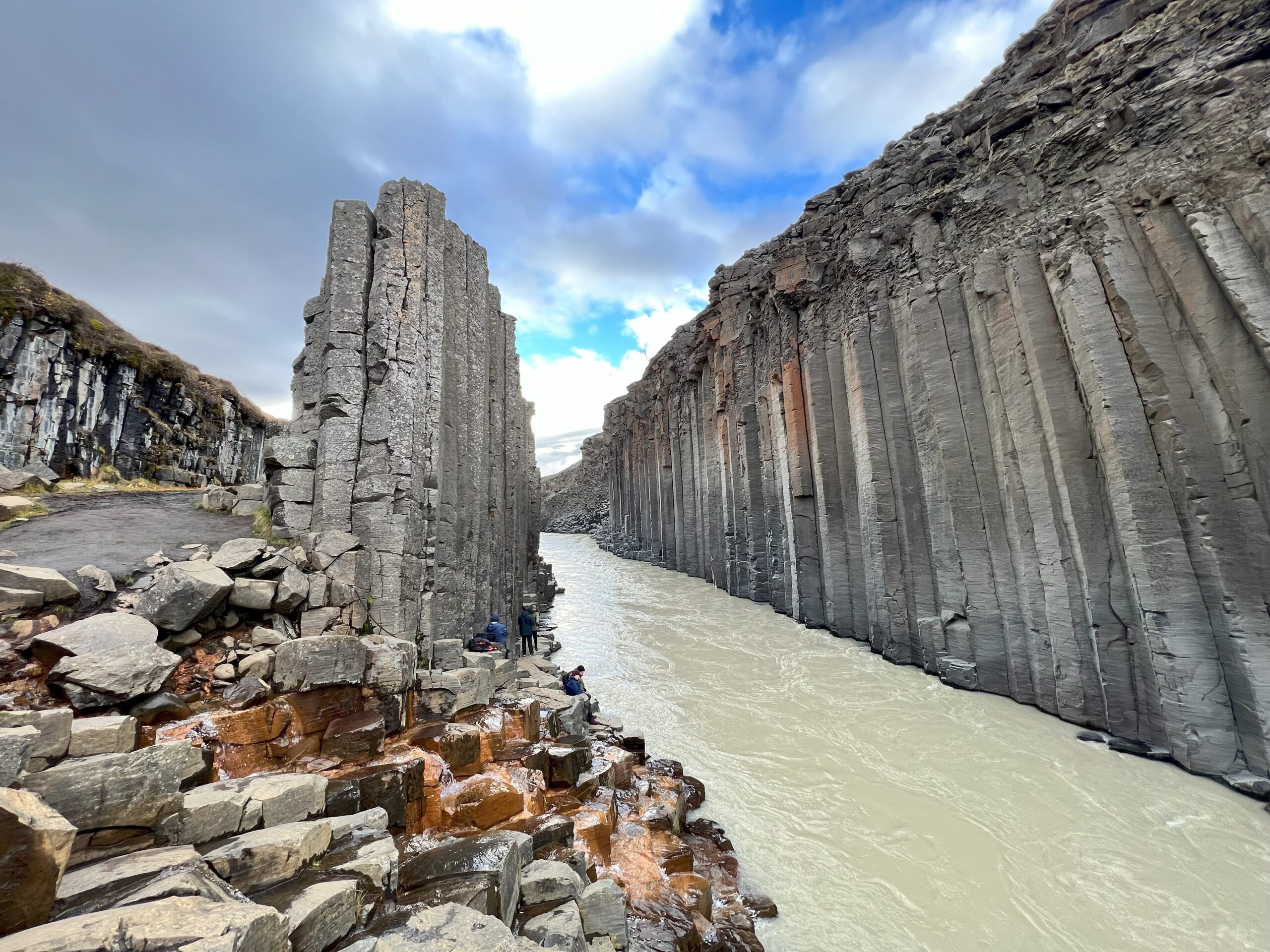
This picture-perfect destination should be on everybody’s itinerary who is driving the ring road. To access the trailhead, you do have to travel off of the highway 30 min each way, so it isn’t too far out of the way.
The hike is a moderate 9.7-kilometer roundtrip with approximately 182 meters of elevation gain.
Here is the All-Trails link:
Stuðlagil Canyon
Hverfjall Volcano
This trail is close to Myvatn Hot Pools and offers a hike to the volcano’s top while circumnavigating the whole volcano rim. It’s a relatively easy hike being 4.33 kilometers and totaling 280 meters of elevation gain. Like anything else in Iceland, please make sure you try this hike with decent weather, as it is extremely exposed. We did this hike on a windy day, and it made it a lot more difficult than it needed to be.
Here is the All-Trails link:
Hverfjall Volcano Hike
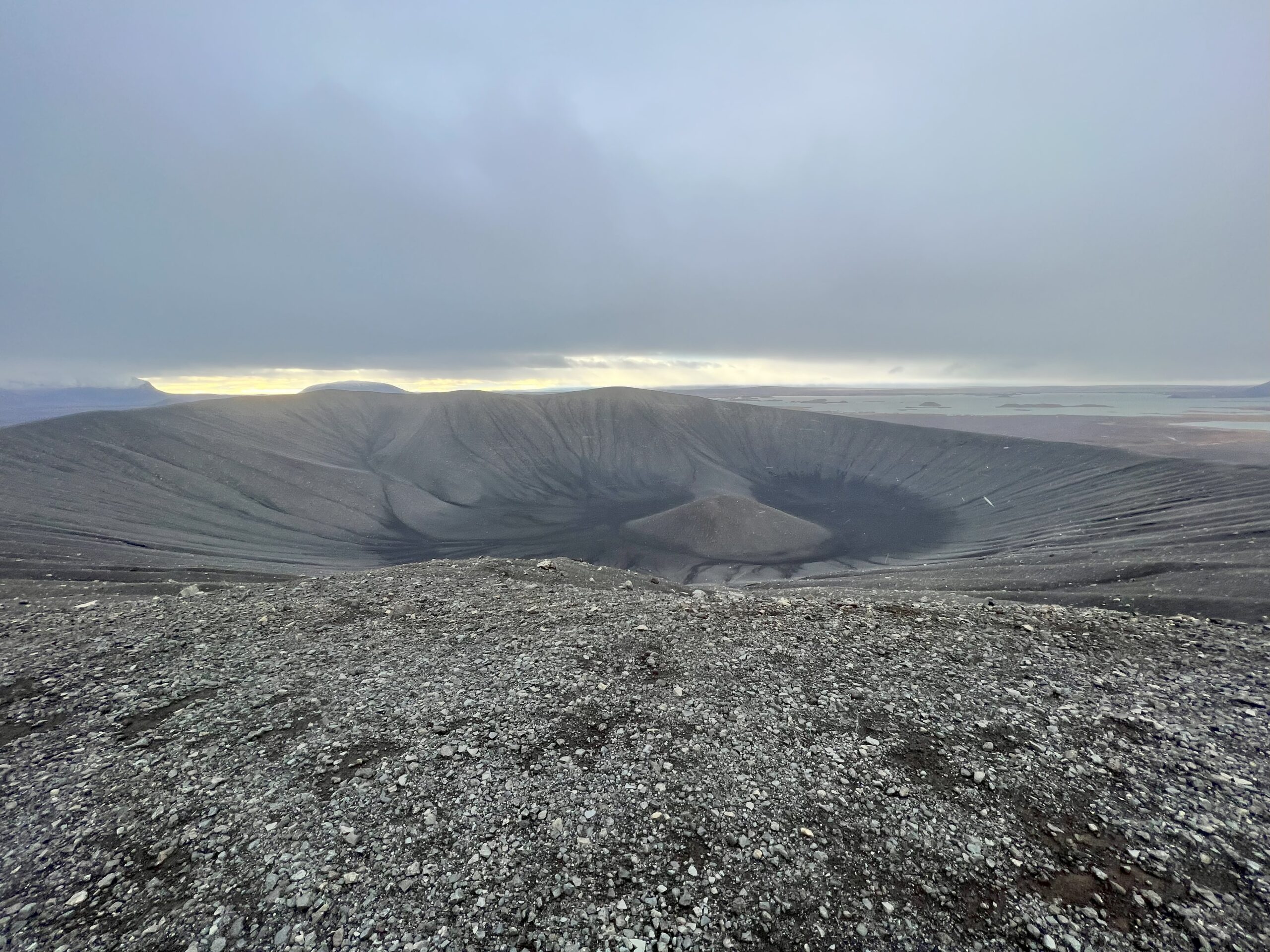
Viking Grave
This was recommended to us while we were stranded in Vik for a few days during a severe windstorm. We decided to check it out once the weather calmed down and found it quite the hidden gem. This Viking grave sits atop a promontory summit with the North Atlantic Ocean on one side and views of Europe’s largest glacier on the other. The hike also includes some abandoned Viking settlements scattered on the hill.
This trail is 3.4 kilometers long and includes 208 meters of elevation gain
Here is the All-Trails link:
Viking Grave
What we spent
| Airfare | $1,565.53 |
| Camper Van | $3,025.20 |
| Van Insurance | $280 |
| Camping Fees | $200 |
| Groceries | $500 |
| Restaurants | $500 |
| Diesel – $9/gallon | $800 |
| Attractions | $1000 |
| Hotels – 3 Nights | $700 |
| Total | $8,570.73 |
This budget was for 20 total days which worked out to be $429/day. While this does seem like a lot, it does include airfare.
Excluding airfare, we spent $350/day.
There aren’t many ways you can travel to Iceland on a budget. Even if you stay in hostels or camp in a tent, you still have to pay for a rental car, which can be expensive. The country lives up to the expectation of being one of the most expensive to travel to in the world. In fact, Iceland consistently ranks in the top 5 in the category.
Here are a couple of tips to save some cash:
- Buy groceries and don’t eat out. Most restaurant bills for two will cost $60-$100 total.
- Stick to a plan and itinerary to avoid unnecessarily driving back and forth and spending money on fuel.
- Travel hack with credit cards to save on airfare (we like the Chase Sapphire card).
- Avoid hotels and stay in hostels or at campgrounds when you can.
